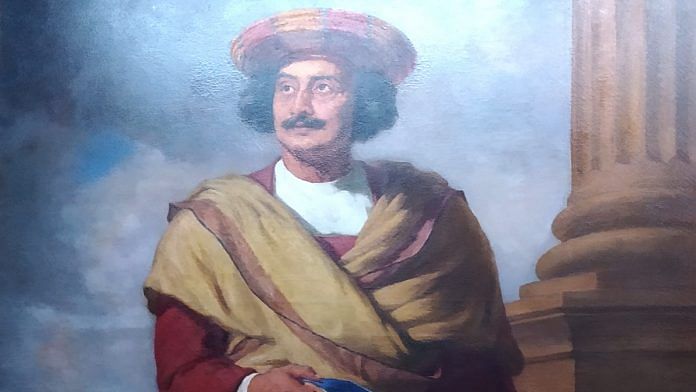In his letter to Lord Amherst, the former Governor-General of India, dated 11 December 1823, Raja Ram Mohan Roy wrote, “…we now find that the government is establishing a Sanskrit school under Hindu pundits to impart knowledge as is already current in India. This seminary can only be expected to load the minds of the physical distinctions of little or no practical use to the society…….The Sanskrit system of education would be best calculated to keep this country in darkness”
While the Sanskrit College was established in Calcutta in January 1824 despite strong objections raised by Roy, his letter played a crucial role in the development of English education in India under the British regime.
On Raja Ram Mohan Roy’s birth anniversary, a glimpse into his life, beliefs and legacy that played an important role in shaping modern India.
Also read: Nissim Ezekiel, a pioneer of Indian-English poetry, was bound by layers of his identity
He wore many hats
Ram Mohan Roy was born on 22 May 1772 in Hindu Brahmin family in Hooghly, Bengal. His father, Ramkanto Roy, was a scholar of Sanskrit, Persian and English languages, who also knew Arabic, Latin and Greek. Not much is known of his early life, but it is widely believed that he travelled a great deal and picked up languages like Persian, Arabic and English apart from Sanskit, Bengali and Hindi.
Roy held various positions of eminence throughout his life, as he pioneered the first wave of reform in the country. He worked as a munshi in Murshidabad and later as an assistant to an official at British East India Company. It was in 1829 that the Mughal ruler of Delhi gave him the title of Raja, although it wasn’t recognised by the British.
While Roy is remembered for the role he played in abolishing the social evils of sati and child marriage in India, he was also a prominent name in educational reform.
Roy’s foray into journalism, too, was one of his many attempts to bring about a change in the socio-cultural landscape of the country through learning and education.
He started the first Bengali language weekly newspaper and the first newspaper in an Indian language, called Sambad Koumudi, in 1821. The weekly newspaper advocated reading habits, the importance of discussion as well as the need for education for all. In 1822, he also published a Persian journal, Mirat-ul-Akbar.
Also read: Vidyasagar, the path-breaking reformer & educationist who is Bengal’s intellectual pride
English education in India
The introduction of English schooling in India is synonymous with T.B Macaulay’s Minute on Indian Education (1835). But the wheels for this had been set in motion much earlier, with Roy’s opposition to establishment of the Sanskrit College.
While the British empire’s agenda was to further colonise the minds of its Indian subjects, Roy believed that the introduction of English education, with a scientific temperament, would aid in establishing a “more liberal and enlightened system of instruction.”
Roy’s letter was in accordance with his reformist beliefs that would eventually lead to the establishment of the Brahmo Samaj, a Hindu reformist organisation, in 1828. He believed that the possibility of change in the Indian society, nestled within an intensive educational programme, could root out the mechanical and traditional teaching of Sanskrit Shastras.
Sivnath Sastri, in his Bengali work “Ramtanu Lahiri O Tatkalin Banga Samaj‘ (1904), wrote that Lord Macaulay sowed his seeds on the prepared soil, and “rich was the harvest reaped” as India benefited from the introduction of English education.
On 7 March 1835, Lord Bentinck passed the resolution declaring the promotion of European literature and science among the native population in India and allocation of funds for English education.
Almost 12 years after Roy’s letter, his idea of English education in India became an official policy, and laid the foundation for the kind of ‘new’ India he envisaged throughout his life.







Nice
RSS never mentions his name.
Neither does the Congress for Congress history that’s worth mentioning started afterMahatma Gandhi came to India